Roman Loranc
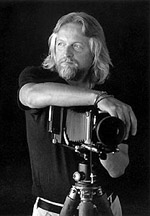
Roman Loranc was born in Bielsko-Biala, Poland, in 1956. He emigrated to the United States in 1981. In 1984 he moved to California, and shortly thereafter fell in love with the Central Valley. Some photographers believe their strongest work comes from exploring their immediate surroundings. “I think of myself as a regional photographer,” Loranc says, “but that does not mean the photography cannot be understood beyond the region. Right now people all over the United States indicate to me that regionalism, born of an informed attachment, has universal appeal.”
Loranc shoots most of his pictures within an hours drive of his home in Modesto, California, but he is also interested in exploring his ancestral roots in Europe. For this reason he makes occasional photographic forays into Poland and Lithuania.
“I’m fascinated by the ancient churches of my homeland,” he says. “These are holy spaces where millions of people have prayed for hundreds of years. They are places of great humility, and remind us how brief our lives are. I feel the same way when I’m photographing ancient groves of native oaks in California. I was unconscious of this when I began, but upon reflection, I think the oaks are just as sacred as the old cathedrals of Europe. They are sacred in that they have survived for so many years. I’m aware that the native people of California held all living things as divine. For me a grove of Valley Oaks is as sacred as any church in Europe.”
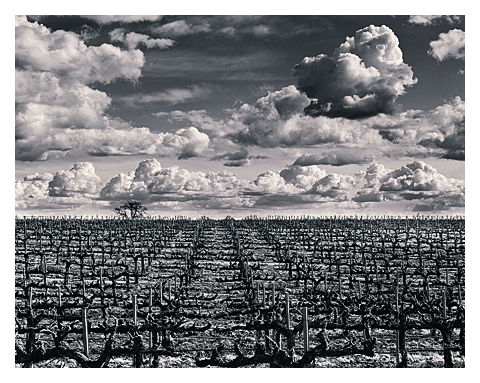
Crucified Landscape, San Joaquin Valley
“I think about how interconnected the world is,” Loranc says. “When I’m out on a crisp winter’s morning, shooting a stand of native oaks, I see oak galls hanging from the trees. These were once used to make the pyrogallol chemicals I use to develop my negatives. So the oak trees I am photographing played a part in the developer I use to process my negatives of those trees. It is healthy to remember that we are often linked to the natural world in ways we don’t even suspect.”
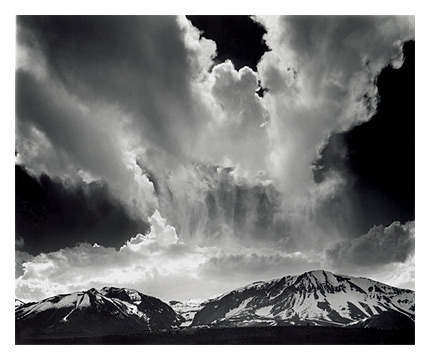
Toccata and Fugue, 2005
Loranc shapes the photo from start to finish. He operates a 4×5 Linhof field camera, shoots the majority of his photographs with a 210mm Nikkor lens, using Kodak’s classic Tri-X film, and hand prints his negatives on multigrade fiber paper. The innate drama of the landscapes is reproduced through a variable split-toning (sepia and selenium) technique. All the printing, spotting, and archival mounting are done by the photographer.
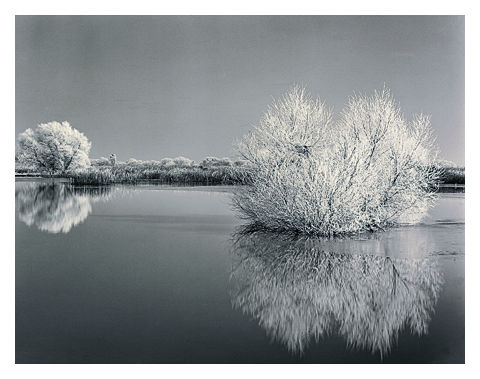
Frosted Willows, Merced National Wildlife Refuge
Loranc’s book, “Two-Hearted Oak, The Photography of Roman Loranc” (Heyday Books, 2003) is an intimate portrait of California’s Great Central Valley. This book is now out-of-print, although limited copies are available through select booksellers. His new book, Fractal Dreams: Photographs from Two Decades, is available now.
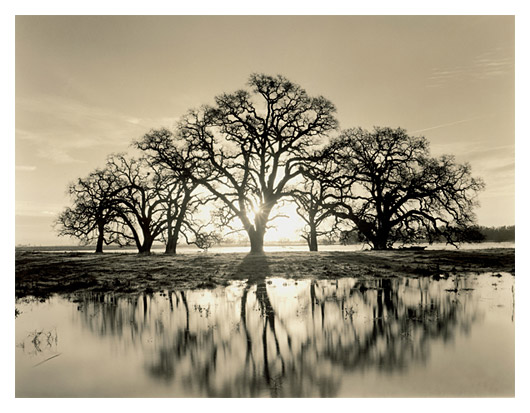
Flashback
Majority of biography text borrowed from Black & White Magazine, Aug 2004, David Best; and from Bloomsbury Review, Nov/Dec 2003, John A. Murray. Portrait of Roman Loranc (above) by Rob Bearden. Copyright © Rob Bearden, 2009. All rights reserved.
Click here to view Roman Loranc: dreaming in daylight: Photographs 1993-2007, our retrospective exhibition and sale of fine art photography by Roman Loranc.
Print Information: All photographic prints are archivally processed gelatin silver prints made from original photographic negatives by Roman Loranc. Prints are dry-mounted on 4-ply, acid-free mat board. They are window matted and signed in pencil on the front of the mat at the lower right corner of the print, and are ready to frame. No digital manipulation is used at any stage of the process.
Prints are available in four standard paper sizes: 8×10″ (matted to 16×20″), 11×14″ (matted to 16×20″), 16×20″ (matted to 22×28″) and 20×24″ (matted to 28×34″). For both technical and aesthetic reasons, not all images are available in all sizes (please inquire). Actual print sizes will be slightly smaller than stated due to the proportions of the image and trimming of borders.
Prints are produced in a limited edition. Older images were limited to 100 prints, and each image size was limited to a total of 25 (older images subject to original size of edition). All new images are limited to a total of 40 prints (regardless of size). Pricing will increase to the next level after 10 prints are sold. Prices start at $900 for 8×10″, $1,200 for 11×14″, $2,000 for 16×20″ and $3,000 for 20×24″ photographs. Prices increase as the edition sells out and are subject to change without prior notice.
All artwork is copyright © of the respective artist or estate.
All other material copyright © Soulcatcher Studio. All rights reserved.
Contact us by Email
Or call 505-310-SOUL (7685)